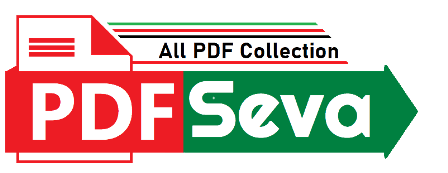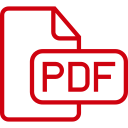
ad here
863 Download
1 year ago
Python the Hard Way PDF Free Download.
It discusses the importance of understanding and using pound characters in programming. It discusses the difference between the octothorpe and # character, which is not used in every country and is considered arrogant. Python ignores # as code, but it is used as a workaround for setting and detecting the format of a string. The # in print “Hi # there.” is not ignored, as it is inside a string until the ending ” character is hit. To comment out multiple lines, put a # in front of each one. Reading code backward is a technique to make the brain not attach meaning to each part of the code, catching errors and catching errors.This exercise focuses on creating a format string with variables embedded in it. By using specialized format sequences and special syntax, variables are embedded in the string, making it easier to print, save, and send them to web servers. To create a format string, change variables without the “my_” in front, try more format characters like %r, and search for all Python format characters online.Common student questions include creating a variable like 1 = ‘Zed Shaw’, understanding the function %s, %r, and %d, and rounding a floating point number. To understand these concepts, practice writing down questions and then explaining them later.
To get data into your programs, you need to learn to take input from a person, change it, and print it out. Most software does this by taking input from a person, changing it, and printing out something to show how it changed. To get input from someone, you can use Python’s raw_input function, which converts a string to an integer using int(). To get a number from someone, you can use x = int(raw_input()), which converts the number to an integer using int(). To get a number from someone, you can type it directly into your Terminal, then run the script and type it at your keyboard.The new line on line 8 is for a less than 80-character line, which is a style Python programmers like. The input() function converts input as if it were Python code, but it has security problems. To print Unicode strings, use a %s format instead of a u.The pydoc command is used to read about Python commands and functions, including open, file, os, and sys. It is important to understand the syntax and understand why some versions of Windows do not have the “more” command. To resolve syntax errors, search online for Python documentation and remember the difference between %r and %s. Additionally, remember that %r is for debugging and %s is for display, and %r is for debugging and raw representation. To print “How old are you?”, use raw_input(), but Python doesn’t recognize it as valid.
In Python, the “import” method is used to add features to a script from the Python feature set. This method keeps programs small and acts as documentation for future programmers. The “argv” variable holds the arguments passed to the script when it is run. In the exercises, the variable is unpacked and assigned to four variables: script, first, second, and third. The “unpack” method assigns the unpacked variables to the variables on the left in order. The module name is “features,” but it is important to learn their real names.To learn Python, try giving fewer than three arguments to your script, write a script with fewer arguments and one with more, and combine raw_input with argv to get more input from a user. Remember that modules give you features, and modules give you modules. Common student questions include the error message “need more than 1 value to unpack,” and the difference between argv and raw_input(). To use the command line, use int() to convert arguments, and don’t overthink it.Study Drills: Find Zork and Adventure, play it, change the prompt variable, add another argument, and combine a “”” style multiline string with the % format activator. Run the script on the command line, not inside Python. If you get syntax errors, try changing the prompt variable to a different value. Focus on how you type the command and why you have a command line argument. Use double-quotes for the prompt variable.
The author discusses learning Python by analyzing functions and their behavior. They suggest various methods to understand the code, such as writing English comments, reading the code out loud, and printing the code. The author also discusses the limit to the number of arguments a function can have, which depends on the version of Python and the computer. The practical limit is about five arguments before the function becomes annoying to use.The author also discusses the use of f in print_all and other functions, which is a variable with a “read head” that can be used to move around the function. The author also discusses the use of shorthand notation += and rewrites the script to use it.This exercise is similar to a Study Drills section, requiring a review of the learned vocabulary. First, write down every word and symbol used in the exercise, including its name and function. If unsure, search online or try using the symbol in code. Repeat the list several times, ensuring accuracy. After memorizing the list, create tables of symbols, their names, and functions from memory.Remember that there is no failure, only trying. This mindless memorization exercise helps focus on a goal and understand the purpose of the efforts. The goal is to learn the names of symbols, which can be used to read source code more easily. Take the exercise slow and avoid hurting your brain, taking 15 minutes at a time and taking breaks to improve learning speed and reduce frustration.
The “Learn Python the Hard Way” by Zed A. Shaw is an excellent learning resource for beginners, offering well-thought-out exercises and step-to-step instructions. It is a useful tutorial for getting started with Python, with practical exercises and step-to-step instructions. It is widely used, and it often introduces new terms or codes without explaining them. The author is surprised that the book has a low rating, but the it is recommended for beginners and is meant to help them get a grip on the language and explore it further. It is not intended for professional Python programmers, but it is a great resource for those looking to learn Python.
| PDF Name: | Learn-Python-The-Hardway |
| Author : | Pdf Plus |
| File Size : | 4 MB |
| PDF View : | 49 Total |
| Downloads : | 📥 Free Downloads |
| Details : | Free PDF for Best High Quality Learn-Python-The-Hardway to Personalize Your Phone. |
| File Info: | This Page PDF Free Download, View, Read Online And Download / Print This File File At PDFSeva.com |
Copyright/DMCA: We DO NOT own any copyrights of this PDF File. This Python the Hard Way PDF Free Download was either uploaded by our users @Pdf Plus or it must be readily available on various places on public domains and in fair use format. as FREE download. Use For education proposal. If you want this Python the Hard Way to be removed or if it is copyright infringement, do drop us an email at [email protected] and this will be taken down within 24 hours!
© PDFSeva.com : Official PDF Site : All rights reserved
